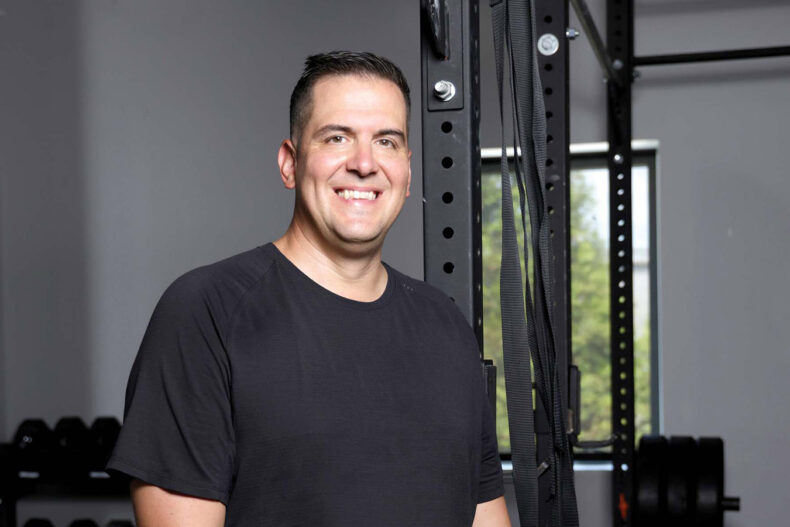
by Jill Clendening
Former sports journalist Joe Lofaro has little memory of Oct. 23, 2015, when his son Daniel loaded him into a car at his Martin, Tennessee, home and said, ‘Come on, Dad, we’re going for a ride.”
That two-hour ride was to Vanderbilt University Medical Center, with his family praying with every mile that he would still be alive when they arrived.
“When I first met him, he was non-communicative, with a complete loss of all muscle movement and had a blank stare,” said Nishitha Reddy, MBBS, MSCI, associate professor of Medicine in the Division of Hematology and Oncology. “My conversation that day was with his family.”
Reddy specializes in treating and researching lymphoma, and Lofaro had just received a diagnosis of Erdheim-Chester disease (ECD), an extremely rare type of blood cancer. ECD symptoms appear when histiocytes, cells that normally fight infection, are overproduced and build up in body tissue and organs. The tissue and organs become dense and fibrous, and unless successful treatment is found, organ failure and death occur. There are around 600 documented cases in the world, though ECD is believed to be underdiagnosed due to its rarity.
In 2016, after VUMC physicians diagnosed and treated their eighth patient with ECD, the Medical Center was designated an official Erdheim-Chester Disease Referral Care Center, one of only 16 in the United States. This means VUMC is listed as an expert resource on the Erdheim-Chester Disease Global Alliance website, and VUMC physicians are connected to other medical providers globally who also treat patients with the disease.
Lofaro, best known locally as a long-time sports journalist and editor at The Review-Appeal and the Brentwood Journal in Williamson County, initially received medical treatment in Jackson, Tennessee, and after ruling out a stroke, a physician told him to get to VUMC as quickly as possible. His symptoms continued to progress, and soon he was unable to walk.

“The first time I knew something was wrong, my speech was slurred,” Lofaro said. “It sounded like I’d been at the bar all night long, and my chin was drooping to one side.”
Lofaro was first seen by VUMC neurologists. Then, an infectious diseases specialist stepped in. Lesions on his leg bones were discovered, and a bone biopsy ultimately led to the ECD diagnosis. An MRI revealed the most troubling finding: lesions covering his brain stem, disrupting nerve signaling throughout his body.
“Treating ECD requires a multidisciplinary approach; it’s not a one-man show,” Reddy said. “First, one needs to accurately diagnose the disease, and its rare, slow progressive symptoms can be misleading, often requiring multiple experts. ECD can involve many vital organs such as the central nervous system, skin and bones. It may take several weeks to arrive at the diagnosis.”
At VUMC, a large team of specialists work together to successfully coordinate the care of patients with ECD, Reddy said, including oncologists, neurologists, ophthalmologists, dermatologists, nephrologists and others, depending on the organs that are compromised.
“Most of these patients are physically very weak at the time of diagnosis because of neurological involvement,” said Reddy, who serves as lead physician for the VUMC referral care center. “Along with treatment, physicial therapy plays an important role in order for them to gain their strength back. Joe is a perfect example of that because he was always determined to get better.”

Back in 2015, a genetic test showed that Lofaro’s cancer cells have the BRAF V600 genetic mutation, and he began taking an oral chemotherapy called vemurafenib. In 2017, this became the first FDA-approved treatment for ECD. Today, Lofaro is able to walk again, and the lesions on his brain stem have nearly disappeared.
“I have to take four pills in the morning and four at night, and so far, it’s keeping me alive,” Lofaro said. “I guess I might just be one of the luckiest men alive.”
To raise money for cancer research, Lofaro recently organized his own team for the 2018 Relay for Life at his high school alma mater, Father Ryan. He recruited many of his high school buddies to walk alongside him, and they wore matching T-shirts that read, “Heard of ECD? Exactly. Neither had I.” Lofaro took the first lap around the Father Ryan track, surrounded by friends, and grinned the entire way.
And, for the first time in three years, Joe was also able to keep a long-time tradition with some of his biggest supporters — his three brothers. Since 2005, the brothers have traveled to a different NCAA or professional football stadium to enjoy a game together. The brothers resumed the tradition in 2018, meeting in Missouri to see Lofaro’s college alma mater and his most recent employer, University of Tennessee Martin, as they took on University of Missouri.
Their team lost that day, but the brothers definitely won.

















